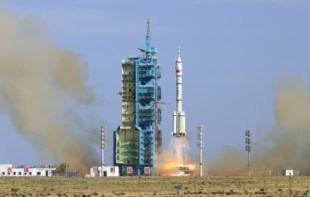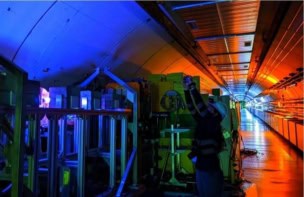Gravity's Ghost: Scientific Discovery in the Twenty-First Century
Harry Collins
2010 University of Chicago Press £22.50/$35.00hb 200pp

In recent years, “big science” has featured prominently in the media, from the excitement surrounding the Large Hadron Collider’s much-awaited switch-on to the controversies over the evidence for global warming. While many scientists and non-scientists alike regarded the “Climategate” controversy as a storm in a teacup, the furore that surrounded the leaked e-mails from climate researchers did, at least, provide a rare example of the media spotlight being turned on the processes of science: the careful and meticulous checking of analysis methods; the strengths (and limitations) of statistics as a tool for assessing the significance of results; the sociology of large research collaborations and how they interact with their own communities, with governments and funding agencies, and with the wider public.
The sociological dimension of “big science” is also the theme of Gravity’s Ghost, the latest book by Cardiff University sociologist Harry Collins. For nearly 40 years Collins has studied at close quarters the nascent field of gravitational-wave research, gaining a unique first-hand perspective on the inner workings of the LIGO Scientific Collaboration as it has patiently worked towards the first direct detection of gravitational waves. These ripples in space–time are produced by some of the most violent events in the cosmos – exploding stars, colliding black holes, even the Big Bang itself – but by the time they reach Earth they are so feeble that their detection presents an enormous engineering and technological challenge, requiring the construction of a worldwide network of giant laser interferometers that can measure displacements smaller than the width of a proton. Yet despite this huge challenge, gravitational-wave scientists stand on the threshold of success. Indeed, the main narrative of Gravity’s Ghost concerns the possibility that a direct gravitational-wave detection may have already happened, offering the final confirmation of a key prediction of Einstein’s general theory of relativity.
Collins’ book tells the story of the “Equinox Event” – a candidate signal that was recorded on 21 September 2007. Was this a burst of gravitational waves from the cosmos or simply another “glitch” of noise in the detectors? Or was it an intriguing third possibility: a so-called hardware injection deliberately induced in the detectors’ output, unbeknown to all but one or two members of the collaboration, as a powerful way to field-test the efficacy of their data-analysis pipelines and procedures?
Collins weaves a fascinating tale that charts the 18 months between the recording of the Equinox Event and the collaboration meeting in March 2009, where its true nature was finally determined. Throughout this period LIGO scientists, working closely with their colleagues in the Virgo project (a French/Italian collaboration operating its own laser interferometer near Pisa), undertook hundreds of teleconferences and exchanged thousands of e-mails as they pored over the noisy detector data, seeking to understand whether they really had directly detected a gravitational wave. From his privileged position embedded within LIGO, Collins accompanied the collaboration every step of this 18-month journey.
The unique insider’s perspective that Collins brings to the narrative is a key strength of Gravity’s Ghost. The quest to characterize the Equinox Event is engrossing enough in itself, unfolding like scenes from a detective novel. However, skillfully interwoven into this detective story are the sociological insights and observations that are Collins’ main objectives, and the fruits of his 40-year close association with the field. To what extent are current gravitational-wave searches influenced by historical detection claims that were subsequently discredited – the “ghosts” of the past? Has the strategy of hardware injections changed the collaboration’s mindset, making it more psychologically predisposed to the possibility of a discovery? In a frontier science, just how certain does one have to be in order to claim a discovery anyway, and how can that level of certainty be meaningfully quantified? How can scientists maintain the integrity and objectivity of their analysis procedures, and insulate against the accusation of post hoc “fine tuning” and bias, while retaining the flexibility of a commonsense response to suddenly changing circumstances?
Collins nicely illustrates this final question through an extended discussion of the “Airplane Event”: the strong signal recorded in a 2004 LIGO science run that was subsequently found to be correlated with the passage of an aeroplane over the detector site. Was it legitimate to simply remove this signal from the data (thus yielding a more realistic upper limit on the strength of gravitational waves) when the possibility of low-flying aeroplanes giving rise to false signals had not been anticipated and properly incorporated into the data analysis protocols for that science run?
Collins recounts in detail the vigorous and often heated debates that the collaboration held about the Airplane Event, and in so doing provides the reader with a thoughtful and entertaining introduction to the often esoteric world of statistics – offering some excellent insights into the subtle differences between Bayesian and “frequentist” probability theory, which the Airplane Event debates illustrate. These parts of the book, together with his broader discussion of experimental uncertainty and detection significance, allow Collins to highlight an intriguing sociological conclusion. Despite the cutting-edge technology, objective measurements and deterministic science at the heart of gravitational-wave research, the question of deciding whether or not to publish a detection claim has a very human and subjective dimension: in the end, it comes down to a vote.
In exploring the sociology of the LIGO Scientific Collaboration, Collins uses the gravitational-wave field as a touchstone for the wider scientific community and indeed wider society as a whole. The book includes an interesting and thought-provoking coda that considers the methods and essential values of science, and in particular a frontier science like gravitational-wave research, as an objective lesson in how best to make critical judgements in our modern and complex world – where exact quantitative analysis and prediction is rarely possible and decisions ultimately rest on statistical hypotheses and physical assumptions.
And what of the denouement of Gravity’s Ghost, revealing the true nature of the Equinox Event? To find out the answer to that question, you will have to read the book!



